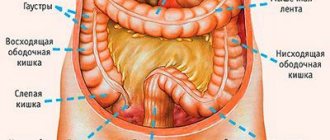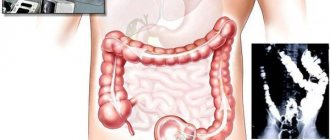- Types of operations for rectal cancer
- Anterior resection
- Hartmann's operation
- Proctectomy
- Abdomino-perineal resection
- Pelvic evisceration
- How does surgical tactics depend on the stage of rectal cancer?
Surgical excision of the tumor is the main type of treatment for colorectal cancer. The type and extent of the operation depend on the stage, size of the tumor, invasion into adjacent tissues, and the presence of metastases. As a rule, surgical treatment is supplemented with a course of adjuvant or neoadjuvant chemotherapy and radiation therapy. [1]
Types of operations for rectal cancer
If the tumor is diagnosed at an early stage (I), has not grown through the intestinal wall and is located close to the anus, local transanal resection is performed. During this operation, no incisions are made on the skin: the doctor inserts instruments through the rectum. An incision is made through the entire thickness of the intestinal wall. The affected area and adjacent tissues are removed, and the resulting defect is sutured.
Local transanal resection is performed under local anesthesia. During the operation, the patient is conscious. Since the lymph nodes are not excised, the procedure is followed by a course of radiation therapy, sometimes in combination with chemotherapy, to destroy any remaining cancer cells in the body.
If the tumor at stage I is located high enough in the rectum, transanal endoscopic microsurgery is used. In essence, this is the same transanal resection, which is carried out using more complex modern equipment, ensuring high precision of the intervention. [2]
What are the differences between the new method
40 years ago, as an alternative to colostomy, a technique was created that involved puncturing the abdominal wall and inserting a special tube into the cavity. Thanks to this idea, called “tube ileostomy,” there was no need to remove one end of the intestine. However, the new technology, unfortunately, has not been widely used.
The new tube ileostomy technique, perfected today by Dr. Wafi Atalay, also involves removing waste products through a tube placed in the abdominal cavity. It is placed for only 2 weeks until the surgical site heals, after which it is carefully removed. In this case, patients do not need a second operation, unlike a colostomy: punctures from the tube heal on their own within 2-3 days.
The advantage of the new method is the use of modern materials. They do not bend and do not block the outflow of intestinal contents, but still have sufficient flexibility. Thanks to this, patients have almost no restrictions in movement and can sit and lie freely. But most importantly, the new method of “tube ileostomy” makes it possible to treat intestinal cancer without a colostomy. Thanks to this, patients can get rid of the disease while maintaining a high quality of life.
The material was prepared in agreement with medical doctor Vafi Atalay.
Anterior resection
For stages I, II and III of rectal cancer, when the tumor is 10 cm above the anal sphincter, anterior resection can be performed. The operation is performed open or laparoscopically. The surgeon removes the area of the rectum affected by the tumor, including some healthy tissue on both sides, as well as nearby lymph nodes and surrounding tissue. Then an anastomosis is performed: the end of the rectum is connected to the end of the colon.
Most often, anastomosis is performed immediately during resection. However, if chemotherapy or radiation therapy was given before surgery, the rectum needs time to recover, otherwise normal healing will not occur. The patient is given a temporary ileostomy: a hole is made in the wall of the ileum (the final section of the small intestine) and brought to the surface of the skin. Usually after 8 weeks the ileostomy is closed and an anastomosis is performed. [3-6]
Indications and contraindications
The operation is performed strictly for medical reasons, when its implementation is a prerequisite for successful treatment of cancer. Since this procedure is quite complex, it has a number of contraindications:
- blood clotting disorder;
- systemic lesions of internal organs;
- acute infection;
- severe form of diabetes mellitus;
- general serious condition of the patient.
Before surgery, therapy is prescribed to stabilize the patient's health.
Proctectomy
Sometimes it is necessary to remove the entire rectum and surrounding lymph nodes. This operation is called proctectomy. It ends with a colo-anal anastomosis - the end of the large intestine is sutured to the anus.
Normally, the rectum acts as a reservoir in which feces accumulate. After proctectomy, this function will be performed by the final section of the colon. To do this, the surgeon can create an artificial J-shaped reservoir and perform an end-to-side anastomosis. This helps reduce the frequency of bowel movements and ensure stool consistency as close to normal as possible. [8]
Abdomino-perineal resection
This type of surgery is used for stage I, II or III rectal cancer, when the tumor is low and grows into the sphincter (muscle sphincter in the anus, which is responsible for retaining feces).
The operation is performed through incisions in the abdomen and anus. Since the anus will be removed, after abdomino-perineal resection a permanent colostomy is applied: the end of the colon is brought out to the skin and a colostomy bag is attached.
You can bring the end of the intestine into the perineal wound. In essence, this is the same colostomy, but it is located in the usual place, where the anus used to be. [3]
Doctor's comment
Extirpation of the rectum in our clinic is carried out with the aim of achieving the best result; treatment tactics are discussed by a team of specialists, which includes an oncologist surgeon, radio- and chemotherapist, etc. Radical removal of the pathological area is carried out using modern endoscopic equipment, which allows performing all manipulations with maximum accuracy. In addition, surgery is performed under general anesthesia, so pain is excluded. In the postoperative period, complete anesthesia is also practiced. In the case of a colostomy: temporary or permanent, you should know that today there are devices that allow the patient to lead a full life. Devices that are attached to the skin are invisible under clothing, do not transmit odors and are easy to clean. In our clinic, treatment tactics for each person are selected individually; to obtain more complete information, it is better to make an appointment. Do not delay your visit to the doctor, because with timely treatment, the chances of having a sphincter-preserving operation are significantly higher!
Head of the surgical service at SwissClinic Konstantin Viktorovich Puchkov
Pelvic evisceration
This is the most serious surgical intervention, which is performed when the tumor grows into neighboring organs. The rectum, bladder and adjacent sections of the ureters, pelvic tissue and lymph nodes are removed; in women, the uterus and appendages; in men, the prostate.
After the operation, a colostomy or urostomy (an opening in the anterior abdominal wall to drain urine) is placed. [9,10]
Preparing for surgery
Before the operation, the patient will undergo a complete examination of the body in order to identify possible contraindications. The examination includes blood and urine tests, a coagulogram (blood clotting test), ultrasound of the abdominal organs, chest x-ray, etc.
Radiotherapy may also be prescribed to reduce the size of the tumor.
A few days before the operation, the patient must go on a special diet that excludes fiber-rich foods; cleansing enemas and laxatives will be prescribed. To combat pathogenic bacteria in the intestines, a course of antibiotics is prescribed.
How does surgical tactics depend on the stage of rectal cancer?
The principles of treatment of rectal cancer at different stages are as follows:
- Stage I. Usually, the operation is initially performed to remove a polyp, which is then sent for histological and cytological examination. If no cancer cells are found at the edges of the tissue sample, treatment is completed. If cancerous or poorly differentiated cells are found, one of the operations described above is performed. Depending on the characteristics of the tumor, treatment is completed at this point, or a course of chemotherapy or radiation therapy is carried out.
- Stage II. If the tumor has grown into neighboring tissues, but has not yet spread to the lymph nodes, anterior resection, proctectomy or abdomino-perineal resection is performed. A course of chemoradiation therapy is preliminarily administered. After surgery, a six-month course of adjuvant chemotherapy is prescribed.
- Stage III. A course of chemoradiotherapy is carried out, then surgery, then a course of chemotherapy for 6 months. Typically, as in the second stage, anterior resection, proctectomy or abdomino-perineal resection is performed, with the obligatory removal of nearby lymph nodes. If the tumor has grown strongly into neighboring organs, pelvic evisceration is indicated.
- Stage IV. If distant metastases are detected, the prognosis is usually poor. But surgical treatment in combination with chemotherapy and radiation therapy helps relieve symptoms and prolong life. Due to the peculiarities of blood outflow from the rectum and colon, metastases are often found in the liver. To combat them, modern methods such as radiofrequency ablation, chemoembolization, and intra-arterial chemotherapy are used. [2,3,11]
Euroonco performs operations of any complexity, open and laparoscopic, for any stage of rectal and colon cancer. We believe that it is always possible to help, even with incurable advanced tumors that doctors in other hospitals refused to treat. Our oncologists use the entire arsenal of modern capabilities to prolong the patient’s life as much as possible and ensure its decent quality. We know how to help.
| More information about the treatment of rectal cancer at Euroonko: | |
| Treatment of rectal cancer | |
| Proctologist-oncologist | RUB 5,100 |
| Chemotherapy appointment | RUB 6,900 |
| Emergency oncology care | from 12,100 rub. |
| Radiologist consultation | RUB 11,500 |
Book a consultation 24 hours a day
+7+7+78
Bibliography:
- Barsukov Yu. A. Cancer of the rectum and anal canal: prospects for combined treatment. Guide for doctors. MK, 2022
- Ministry of Health of the Russian Federation. Rectal cancer. Clinical recommendations. 2022.
- Surgical diseases, ed. Academician of the Russian Academy of Medical Sciences M.I. Kuzin. Moscow, “Medicine”, 2002.
- Abelevich Alexander Isakovich Low anterior resection of the rectum for malignant neoplasms // Medical almanac. 2010. No. 1.
- Sevostyanov S.I., Panina M.V. Anterior resection of the rectum in elderly and senile patients // Clinical gerontology. 2006. No. 1.
- Semionkin E.I., Khubezov D.A., Kulikov Evgeniy Petrovich, Trushin S.N., Ogoreltsev A.Yu., Lukanin R.V., Yudina E.A. Analysis of the results of anterior rectal resection // Ross. med.-biol. Vestn. them. acad. I.P. Pavlova. 2013. No. 2.
- Kurygin Al. A., Semenov V.V., Tarbaev I.S. Hartmann's operation: 100 years in surgery // Vestn. hir.. 2022. No. 2.
- Joshua IS Bleier, Justin A Maykel. Outcomes following proctectomy. Surg Clin North Am. 2013 Feb;93(1):89-106. doi: 10.1016/j.suc.2012.09.012. Epub 2012 Oct 30.
- Pavlov V.N., Izmailov A.A., Safiullin R.I., Kazikhinurov A.A., Kutliyarov L.M., Kabirov I.R., Urmantsev M.F., Sultanov I.M., Abdrakhimov R. .IN. Pelvic evisceration in the complex treatment of locally advanced pelvic tumors // Medical Bulletin of Bashkortostan. 2015. No. 3 (57).
- Aglullin I.R., Didakunan F.I., Ziganshin M.I., Valiev A.A., Aglullin T.I., Safin I.R., Aglullin M.I. Technical aspects of evisceration of the pelvic organs // Volga Oncology Bulletin. 2015. No. 4.
- Korolkov S.V., Korolkov V.R. Modern approaches to the diagnosis and treatment of rectal cancer // Chief Physician of the South of Russia. 2016. No. 2 (49).
Treating a Blocked Bowel
Sometimes cancer blocks the intestines, causing symptoms like pain and vomiting. As a rule, urgent medical attention is required. This condition is treated in two ways.
Stenting
During the procedure, the surgeon uses a colonoscope to place a stent in the blocked area. The stent then expands to keep the bowel open.
The cancer causes a blockage that can be removed through surgery at a later time.
Surgery
Sometimes intestinal obstruction is corrected through surgery by removing the blocked section of the rectum. After this surgery, most patients have a temporary or permanent stoma. The surgeon sometimes combines this type of surgery with tumor removal.
Rehabilitation after surgery for rectal cancer
After surgery, the patient will be encouraged to start moving as soon as possible, which will prevent complications such as infections and blood clots from developing. The physiotherapist will provide information on leg and breathing exercises.
By the evening after surgery or the next day, the patient will be assisted to get out of bed or sit up for a short time.
Pain
After surgery, the patient experiences pain and discomfort, which is controlled with analgesics. Any pain or discomfort should be reported to nurses.
They will provide medicine to relieve the condition. You may need to change the dosage or change the analgesic.
Spinal anesthesia is also provided. This is an injection of a long-lasting pain reliever into the fluid around the spinal cord. They relieve pain for up to 24 hours. Another alternative is to administer a continuous dose of painkiller into the cerebrospinal fluid using a pump - an epidural.
Painkillers are given through an IV placed in a vein in the hand or forearm. The drip is connected to a pump or pump (patient-controlled analgesia). By pressing a button, you can receive an additional dose of analgesic. Effective equipment programming prevents overdose.
Droppers and drainages
A dropper is installed that supplies fluid to the body into a vein in the hand or forearm - intravenous infusion. Once the patient is able to take food and fluids independently, it will be removed.
During the operation, a catheter is placed in the bladder to drain urine.
Some patients have a nasogastric tube installed, a tube that goes through the nose into the stomach. It is used to remove fluid from the stomach until the intestines begin to function.
Drains may be placed in the surgical wound area to drain excess fluid. They are removed after a few days.
Eating and drinking
Soon after surgery, the patient can eat and drink independently. To speed up the recovery process, the patient is provided with additional drinks for several days.
Stoma
If a stoma has been created, it will be swollen at first, but will shrink to its normal size within a few weeks. A loop colostomy uses a rod for support while healing occurs. The rod is removed after a few days.
The nurse will teach you how to care for your stoma. For most patients, 3-4 days are enough to learn and cope with this situation.
Extract
Depending on the type of surgery performed, the period of hospital stay is 3-7 days. An appointment is made for a postoperative examination, where the doctor will advise you on further treatment - radiation therapy or chemotherapy.
If sutures, clips or staples are placed on the wound, they are removed 7-10 days after surgery.
Sex life after surgery
The doctor will provide information on how long it will take for rehabilitation after surgery for rectal cancer and when you can resume sexual life. For most people this takes at least 6 weeks, and often longer.
For patients with an ostomy, it takes longer to adjust.










